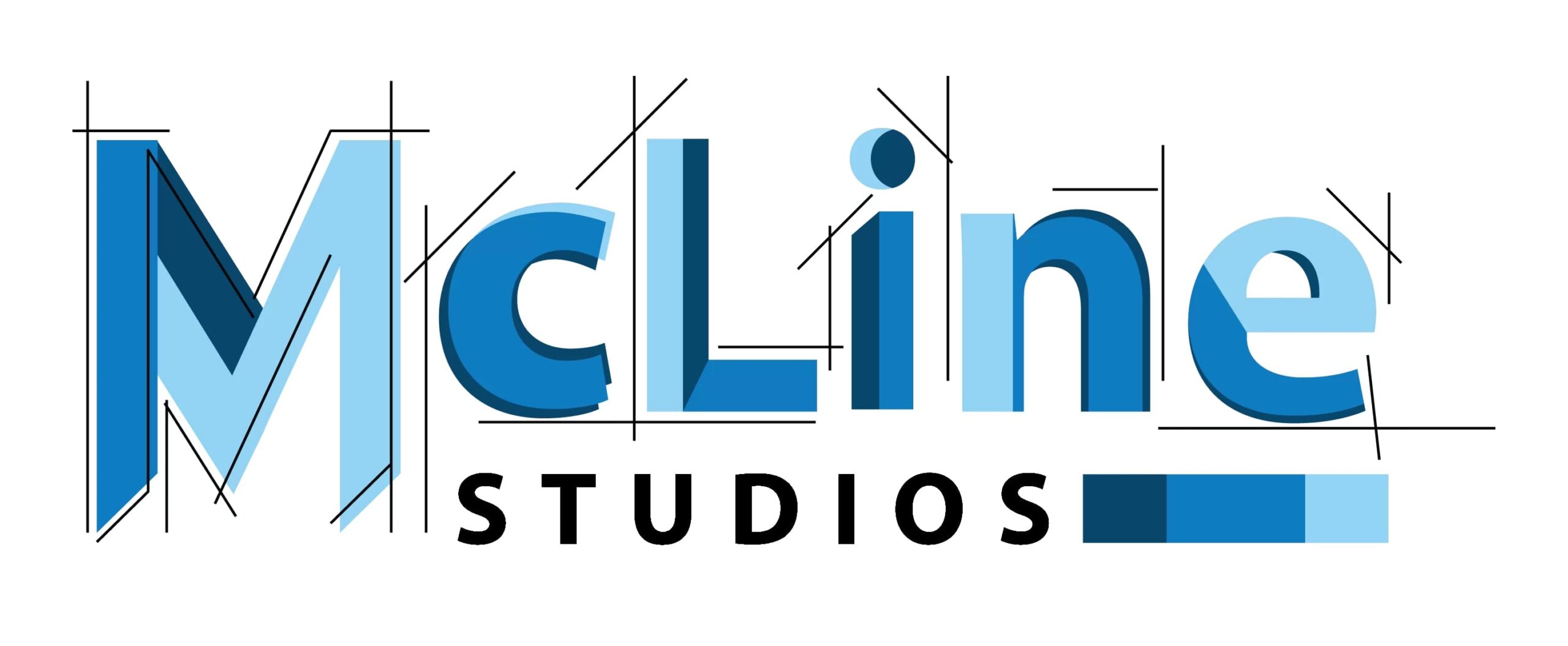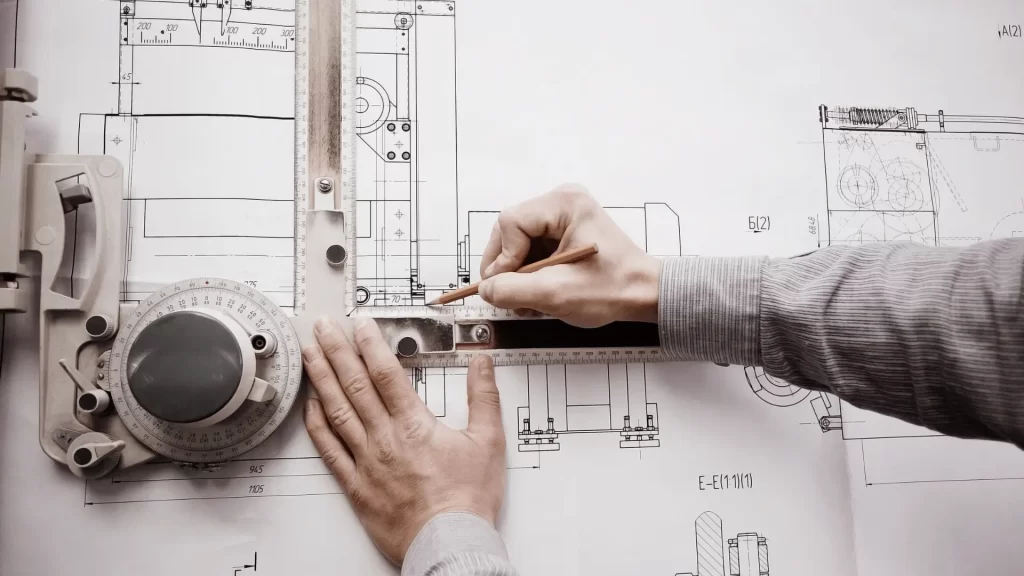Every structure, whether it’s a towering skyscraper or a simple bridge, begins with a vision – a design that serves as the blueprint for bringing dreams to life. Three types of drawings play distinct roles in the building process: Shop Drawings, Design Drawings, and As-Built Drawings.
Shop Drawings provide precise details about how specific components are manufactured. Design Drawings are the initial plans created by architects and engineers. As-built drawings document the actual construction, recording any deviations from the original design.
So, let’s simplify it all. We’ll break down what each drawing does, why they’re important, and the differences between them.
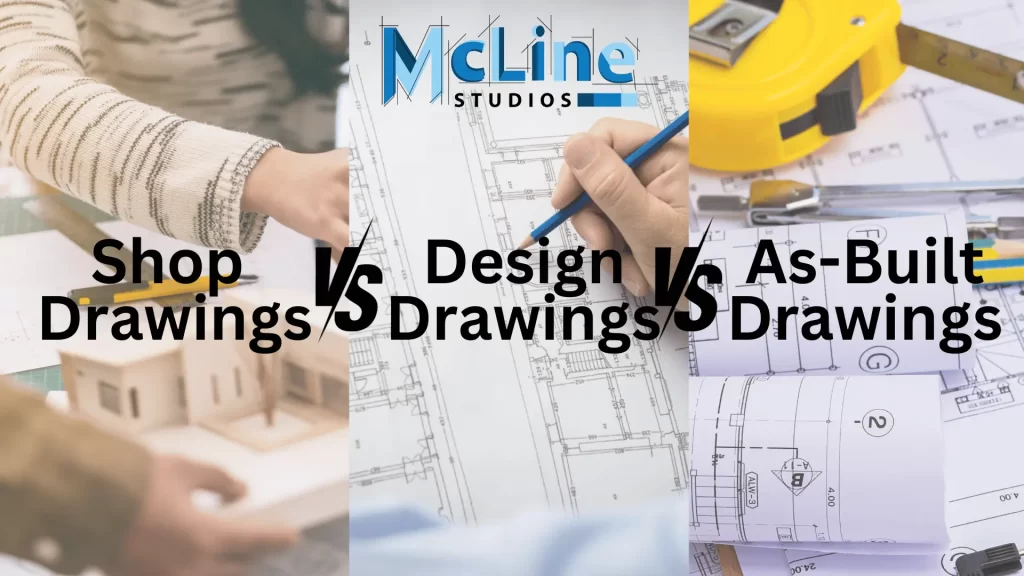
What are Shop Drawings?
Shop drawings, often referred to as fabrication drawings, are a crucial component of the construction process. These drawings are created to illustrate detailed information about specific components or elements within a project, such as structural, mechanical, or electrical systems.
They are not intended for design or conceptual purposes but are rather a set of instructions for manufacturers and subcontractors to produce, assemble, or install various building elements.
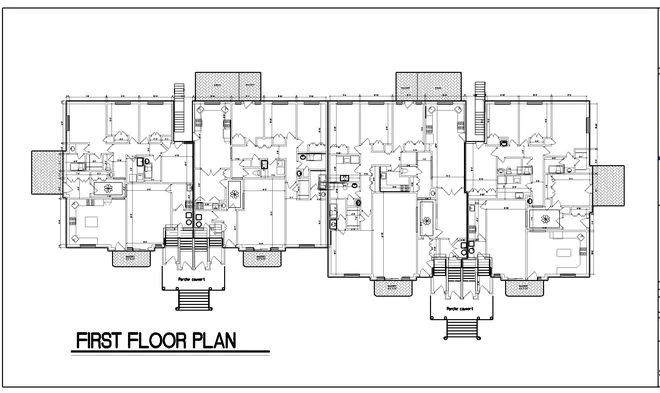
Characteristics of Shop Drawings
- Specificity: Shop drawings provide precise details about materials, dimensions, tolerances, and installation procedures for various components. For example, in the case of millwork shop drawings, these would outline the specifications for custom cabinetry or woodworking elements in a building.
- Fabrication Guidance: Shop drawings serve as a guide for manufacturers, instructing them on how to create the specific components. This could include the type of materials, fasteners, and assembly methods to be used.
- Compliance: They ensure that the manufactured items meet the design and safety standards specified in the design drawings, local building codes, and project requirements.
- Trade-Specific: Shop drawings are highly specialized and cater to individual trades such as HVAC, electrical, or plumbing. Each trade may produce its own set of shop drawings.
- Collaborative Effort: Their creation typically involves close collaboration between the contractor, subcontractors, and manufacturers.
What are Design Drawings or Construction Drawings?
Design drawings, also known as construction drawings, are fundamental to the early stages of a construction project. Architects and engineers consider them to communicate the design concept and details to all stakeholders, from clients to contractors.
Design drawings serve as a visual representation of the project and encompass architectural, structural, mechanical, and electrical plans. These drawings are critical for obtaining permits, estimating costs, and gaining approval from clients and authorities.
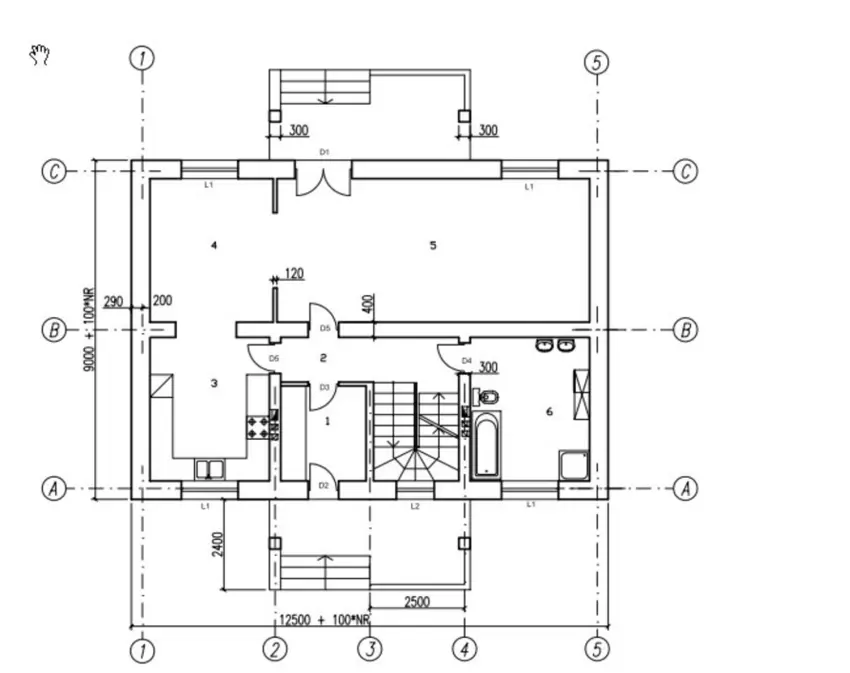
Characteristics of Design Drawings
- Conceptual: Design drawings are primarily conceptual and represent the vision of the project. They provide an overall layout of the building, including floor plans, elevations, and site plans.
- Client Presentation: These drawings are often used to present the design concept to clients for their approval and input.
- Regulatory Compliance: They are essential for obtaining building permits and ensuring that the project complies with local building codes and regulations.
- Estimation: Design drawings are crucial for estimating construction costs and determining the feasibility of the project.
- Foundation for Other Drawings: Shop drawings, as-built drawings, and various other project documents are derived from the initial design drawings. These serve as the foundation upon which the entire project is built.
What are As-Built Drawings?
As-built drawings are created after the completion of a construction project. They are an accurate and detailed record of the actual conditions of the project, showcasing any deviations or modifications that occurred during construction.
These drawings are essential for future reference, maintenance, renovations, and facility management. They also play a critical role in identifying any discrepancies between the original design and the final construction.
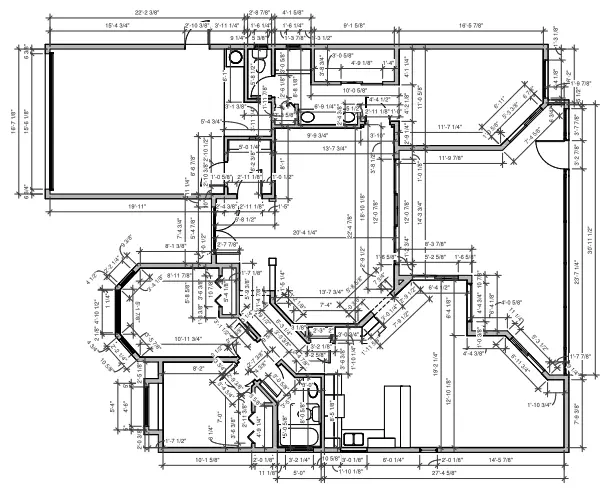
Characteristics of As-Built Drawings
- Record of Changes: As-built drawings document any changes made during construction, including alterations, additions, or omissions from the original design.
- Accurate Representation: They reflect the actual measurements and conditions of the completed project, ensuring that future work is based on a true representation of the structure.
- Post-Construction Verification: As-built drawings are used to verify that the project was constructed as planned and to identify any discrepancies.
- Facility Management: These drawings are invaluable for facility managers and maintenance personnel, as they provide a detailed record of the building’s systems and components.
- Legal Documentation: As-built drawings can also serve as legal documentation in case of disputes or claims related to the construction process.
Shop Drawings vs. Design Drawings vs. As-Built Drawings
| Aspect | Shop Drawings | Design Drawings | As-Built Drawings |
| Purpose | Detailed instructions for manufacturers and subcontractors to produce, assemble, or install specific building components. | Conceptual representation of the project’s design and layout. | Accurate record of actual conditions after construction, documenting any changes. |
| Stage of Creation | Typically during the construction phase. | Prepared in the pre-construction phase. | Generated after construction is complete. |
| Specificity | Highly detailed and trade-specific, providing specific measurements, materials, and assembly methods. | The conceptual layout and overall design concept, are not as detailed as the shop drawings. | Detailed records, capturing actual measurements and conditions. |
| Intended Audience | Manufacturers, subcontractors, and construction personnel. | Clients, regulatory authorities, and various stakeholders are involved in the project’s approval and planning. | Facility managers, maintenance personnel, and future renovators. |
| Changes and Deviations | Aim to match the design drawings closely to ensure production accuracy. | Documented in cases where there are discrepancies between design plans and the final construction. | Documented to reflect any alterations or additions made during construction. |
| Legal Documentation | Rarely used as legal documents. | May be used as legal documents for approvals, permits, and contractual agreements. | Can serve as legal documentation in disputes or claims regarding the construction process. |
Conclusion
To sum it up, understanding the disparities between shop drawings, design drawings, and as-built drawings is important for effective project management in the architecture and construction industry.
Shop drawings, with their detailed specifications, facilitate the manufacturing process, while design drawings serve as the creative blueprint of a project. As-built drawings, capturing real-world conditions, ensure that the final construction aligns with the original intent.
For comprehensive drafting solutions consider McLine Studios. McLine Studios is a Delaware, USA-based professional experienced over 17 years in drafting solutions to architects, builders, contractors, sub-contractors, and manufacturers around the globe.
Frequently Asked Questions
What is meant by Shop Drawings in Construction?
Shop drawings in construction are detailed, project-specific diagrams created by contractors, showing precise assembly and installation details for building components. They aid in coordination, compliance, and quality control. These drawings facilitate communication among stakeholders and are essential for custom components.
What is the reason for Shop Drawings?
Shop drawings are detailed, custom-made drawings produced by contractors or fabricators to illustrate how specific components or products will be manufactured or installed in a construction project. They serve as a bridge between design plans and practical execution, ensuring accuracy, compliance with specifications, and efficient communication among all project stakeholders.
What are the 6 types of Construction or Design Drawings?
The six types of construction or design drawings are architectural drawings, structural drawings, electrical drawings, mechanical drawings, plumbing drawings, and civil drawings.
These drawings collectively provide a comprehensive blueprint for construction projects, detailing architectural features, structural elements, electrical systems, mechanical systems, plumbing installations, and civil engineering components, helping ensure coordinated and accurate construction.
Are AS Drawings and As-Built Drawings similar?
AS drawings (As-Submitted) and as-built drawings are related but distinct. AS drawings represent initial design plans submitted for approval. As-built drawings, on the other hand, document how a project was constructed, reflecting any changes or deviations from the original plans. They provide an accurate record of the final construction, serving for maintenance, future renovations, or legal compliance.
What do you need for Construction or Design Drawings?
For construction or design drawings, you’ll need detailed architectural plans, including floor plans, elevations, and sections. Structural engineering drawings, electrical and plumbing plans, and HVAC designs are essential. Material specifications, site surveys, and code compliance information are also necessary.
